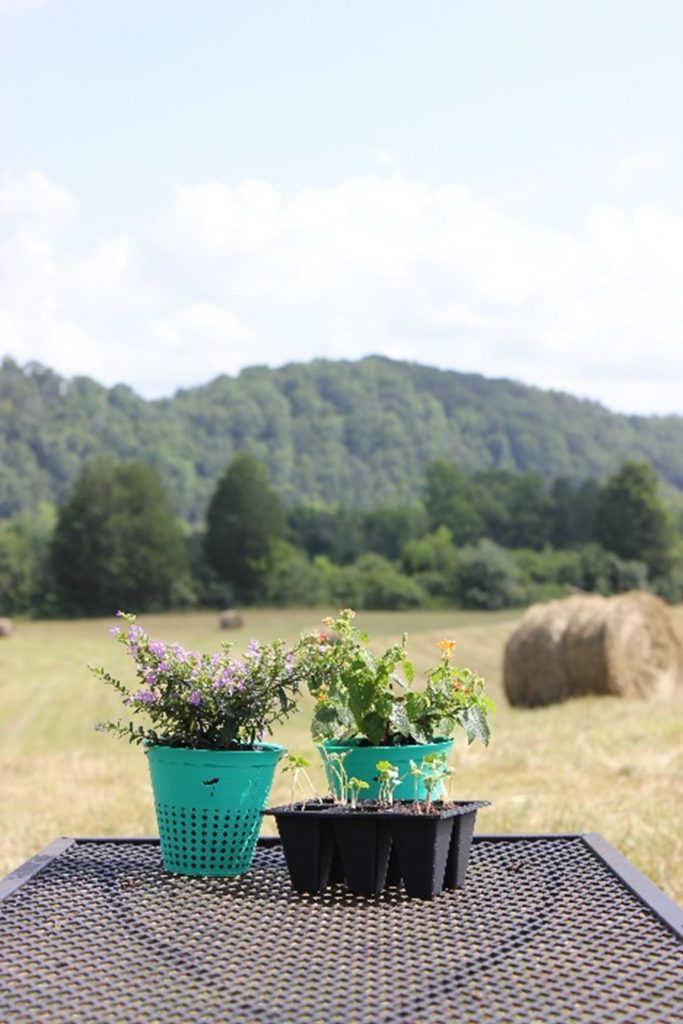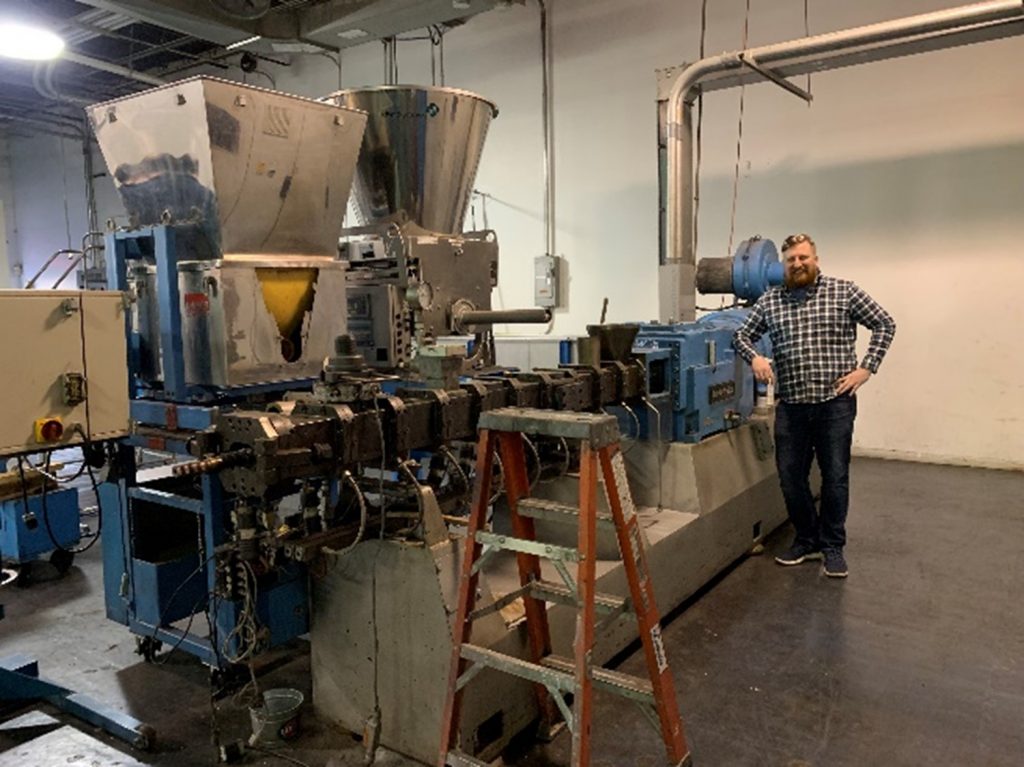What’s Up! 👋
Last week’s news cycle was basically $GME and $AMC with the week capping off with Elon Musk on Clubhouse – basically the most unexpected things you could possibly expect.
Fortunately for all of us – people working on great climate technologies hasn’t stopped which means there was some cool progress happening in the space. Might be useful to include some weekly updates on publicly traded clean tech stocks and corresponding news/updates around them.
That way you can get the scoop on startups and tech from our reports and get updates on how the established incumbents are doing as well.
Maybe we’ll give it a try next week.
In Your Inbox: Storing energy in ice cream, startup Axiom Cloud raises a round for their software that makes refrigerators more efficient; A conversation with mobius

Axiom Energy initially failed.
Axiom Energy was what came before Axiom Cloud. They were a hardware company focused on building thermal batteries. Effectively devices that could load shift cooling capabilities to off-peak (cheaper) electricity hours.
Hardware is hard, especially when the alternative option in the energy space is to just pay the electrical bill without the overhead of integrating a new piece of hardware into the property.
But software is eating the world – and such did Axiom Energy. After raising $12.5 Million from investors they realized the hardware approach wasn’t going to get them anywhere. However, they happened to have developed a piece of software that would provide them the legs to make energy efficiency for commercial refrigeration efforts possible.
Axiom Cloud was then born – and seed funded by investors that included Powerhouse Ventures. Axiom Cloud isn’t doing something that hasn’t been tried before, but they’ve found a way to optimize it for commercial refrigeration operations.
Load shifting to avoid expensive ToU rates and demand charges.
The principle in it of itself is simple – capture data on how well refrigerators are holding temperature and usage rates and then use that information to dynamically pre-cool to avoid having to run compressors during peak electric hours. The result is on bill savings.
Now this space is challenging – energy efficiency as a whole isn’t a customer problem that is actively sought out. Most businesses are focused investing into improving or adding to their business as opposed to electricity bill savings – unless the electric bill makes up most of their OpEx.
The true application for Axiom Cloud is their ability to get contracts with utilities for demand response purposes much like how OhmConnect opened up demand response for residential properties.
It will be interesting to monitor Axiom Cloud’s customer base and progress. If they are able to drive enough customer adoption they may have a strong business and technology that could be acquired by the likes of OhmConnect or Autogrid. Axiom Cloud could be a strong feature for those large grid software service providers.
Sign up for The Impact and learn the perspectives behind the latest sustainability trends

This week Jeff Beegle, the Co-Founder and Chief Science Officer of mobius, provides insights on how mobius is approaching the plastics circular economy.
Tony Bova and I are the co-founders of mobius. We met eight years ago during undergrad up in Ohio, through extracurricular student groups that were focused on sustainability and renewable energy. In one of these groups, we started a green fund at our university to try to improve sustainability and student involvement on campus.
Through all of that, we went through a business plan competition to try to raise money for one of the projects we were working on. Even though that didn’t actually go anywhere, that was our exposure into entrepreneurship. So after undergrad, Tony and I went to the University of Tennessee – they had a PhD program in energy, science and engineering. The appeal was that it was an interdisciplinary degree where you would work on your technical chops, but also have a focus in entrepreneurship or policy while also getting to work with the national labs.
We both saw that this was an awesome opportunity to go to grad school and be able to start working on the foundation for a startup. We did we did pitch competitions and participated in some local accelerator programs. This led to us getting a local office with lab space in the Knoxville area, and then we started getting grants encouraging us to do research and development.
Mobius is connecting the dots between waste generators and manufacturers who are otherwise taking petroleum based or natural gas-based materials to make consumer products. From a first principles perspective, our approach is that we see a double-sided market when it comes to waste generation and creating chemical and material building blocks. There are many companies that produce large quantities of what we like to call industrial organic waste.
Industrial organic waste is inevitable. For instance, food processing companies will typically produce organic waste (peels, pits, etc). Even though most of the “food value” is extracted, leaving waste behind, there’s still value in the waste from a chemistry perspective. We look at organic waste as a composite of four building blocks: proteins, fats, sugars and lignin.
We evaluate these waste streams when we talk to large companies. Then, on the back end, we are developing and building a portfolio of technologies to convert those building blocks/waste components into chemical and material building blocks, such as polymers, specialty chemicals that are made from waste.

Our first focus is taking lignin, which is the primary waste product of the paper and biofuel industry. We have a proprietary process to convert lignin into biodegradable and compostable polymers.
We are primarily focused on environmental impact. A lot of food production methods are heavily reliant on plastic. From the beginning of planting, producers are using plastic mulch film (to prevent weeds), propagation trays, and flowerpots that are typically single use, mainly to avoid spreading disease. These plastics are mostly polyethylene, which is not degradable in soil or compost. Farmers will remove the plastic from the field post-harvest, but because it’s contaminated with pesticides and herbicides, it often can’t be recycled. In the worst scenarios the non-degradable plastics are being tilled into the soil, which accumulates micro and nano plastics in the soil, or burned.
mobius is currently creating a biodegradable and compostable material that can replace plastic products used in agriculture. When farmers are done harvesting, our products can be tilled or mixed into the soil and contribute to soil health instead of having to be removed and manually transported to a landfill. Our material naturally degrades in the environment, contributing nitrogen and potentially other nutrients to improve soil health. There is some evidence in literature to suggest that biodegradable mulches can improve microbial activity and soil health in these applications.
We’ve taken a fundamentally different approach than other kinds of bioplastic companies – we’re trying more to integrate with existing supply chains and work with existing manufacturers, rather than trying to do that ourselves. We’re building technologies that take lignin and convert it into a new product or a raw material. Other companies are more focused on producing the polymer and the end product.
If we can scale our technology, we can integrate into those manufacturing plants to make a more sustainable plastic. For instance, flowerpot manufacturers that have attempted to make biodegradable plastics in the past have not been commercially viable because the biodegradable polymers they’re using are expensive. Since we’re using lignin, which is a waste stream, that helps reduce the cost of materials.
In agriculture there are regulations on who can use biodegradable and compostable plastics. If you are a certified organic grower, the USDA does not allow you to use biodegradable and compostable materials because there’s not enough data on the impacts of biodegradable plastic on crops. Farmers can still use a biodegradable plastics but can’t degrade it in the same place that they’re growing your crops.
This is still a relatively new – studying the end of life in terms of polymers and in the natural environment. Because soil types vary so much by region, it’s hard to make policies that are a blanket policy for all farmland across the US.
We’re also trying to contribute to the development of these standards to inform new policies related to biodegradable and compostable plastics.
It’s a really exciting time!
We’re a part of several industry associations that are trying to bring the entire ecosystem together. We regularly interact with brands, retailers, and manufacturers to understand what the market is like.
Again, mobius is looking at companies that are producing organic waste on a large scale are investing in solutions to find more sustainable ways to get rid of their waste, as well as companies looking at their improving their plastic footprint. Both of these trends have been noticeable and will only increase as time goes by.
With our technology, there’s a very clear use case of a circular product, lignin. We can take lignin, a waste stream from paper mills, turn it into a flowerpot, and then paper mills can use that flowerpot to propagate the next generation of their trees. That’s a very clear version of what we think the future can look like.
Writers: Swarnav S Pujari, Daniel Kriozere
If you aren’t absolutely thrilled with The Impact, reply and let us know why. Or you can unsubscribe from all updates by clicking here.
Copyright © The Impact 2021. All Rights Reserved || 19 Morris Ave, Bldg 128, Brooklyn NY 11205
Develop your market map of up-and-coming climate startups and market opportunities by subscribing to our weekly newsletter for free.